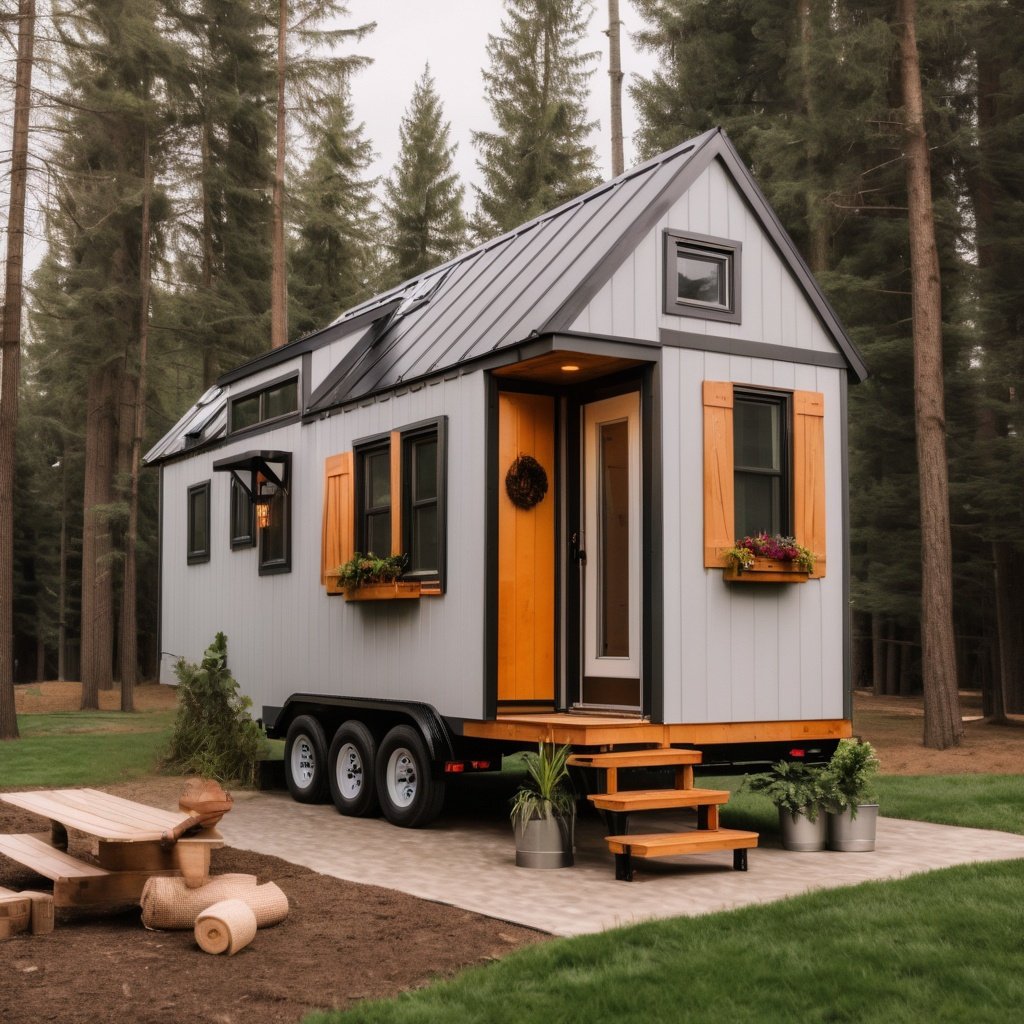Why Are More Young Adults Buying Tiny Homes? The Top Reasons for This Housing Shift
With skyrocketing housing costs and an increasing focus on sustainability, many young adults are rethinking traditional housing options. Tiny homes, particularly those on wheels, are becoming a preferred choice among millennials and Gen Z. But what’s behind this trend, and why is it resonating so strongly with today’s younger generation? In this post, we’ll break down the top reasons young adults are choosing to go tiny, from affordability and flexibility to sustainability and minimalist living.
1. Financial Freedom and Affordability
For many young adults, buying a traditional home is out of reach due to high costs and significant debt, particularly student loans. Tiny homes, with an average cost between $30,000 and $60,000 (or even less for DIY builders), offer a budget-friendly alternative. With lower upfront costs and fewer maintenance expenses, tiny homes make homeownership accessible without the long-term burden of a mortgage.
Smaller Mortgage or None at All: Many tiny home buyers can pay for their homes outright or with a significantly smaller loan, leading to faster financial freedom.
Reduced Living Expenses: Lower utility costs, less property tax, and minimized maintenance requirements help keep expenses down.
2. Flexibility and Mobility
Tiny homes on wheels bring an unprecedented level of mobility, which appeals to younger generations who prioritize experiences over material possessions. The ability to travel and relocate easily makes tiny homes attractive to young adults who value flexibility, adventure, and the freedom to move when life demands it.
Home on the Road: Young adults with remote jobs, or those who simply crave adventure, find it appealing to travel without sacrificing the comforts of home.
Minimal Attachment to Place: Rather than being tied to one location, tiny home ownership allows individuals to explore different places and communities.
3. Sustainability and Environmental Impact
Young adults are often more environmentally conscious, and tiny homes support this lifestyle by requiring fewer resources and leaving a smaller carbon footprint than traditional homes. Most tiny homes use sustainable materials, require less heating and cooling, and promote a minimalist lifestyle that aligns with sustainable values.
Reduced Energy Consumption: With less space to heat and cool, tiny homes consume a fraction of the energy that larger homes require, leading to a reduced environmental impact.
Encouragement to Use Sustainable Solutions: Many tiny homeowners incorporate solar panels, composting toilets, and other eco-friendly systems to further minimize their footprint.
4. Minimalist Lifestyle and Focus on Experiences
The minimalist movement has gained traction in recent years, with many young adults recognizing the value of owning fewer possessions and focusing on life experiences. Tiny homes encourage this lifestyle by design—limited space means only essential items are kept, reducing clutter and encouraging mindful consumption.
Mental Clarity: A clutter-free environment leads to reduced stress, helping young adults feel more in control of their lives.
Greater Emphasis on Quality Over Quantity: With limited space, young adults become more intentional with purchases, focusing on high-quality items that serve multiple functions.
5. Community and Connection
Tiny home communities are popping up across the U.S., fostering connection and shared values among like-minded individuals. Many young adults seek a sense of community, and these neighborhoods provide a space to bond with others who value sustainability, simplicity, and alternative living.
Shared Amenities and Resources: Many tiny home communities offer shared gardens, event spaces, and other communal amenities, making it easier to live simply and enjoy shared experiences.
Sense of Belonging: Living in a tiny home community brings people together, offering social support and fostering a strong sense of belonging.
6. Simplified Maintenance and Upkeep
Maintaining a large property can be time-consuming and expensive. Young adults often value a more manageable lifestyle with fewer maintenance demands, allowing them more time to focus on career growth, travel, or hobbies.
Lower Maintenance Costs: Fewer appliances, a smaller footprint, and a simplified layout make tiny homes easier to clean and maintain.
More Time for Priorities: Without the upkeep demands of a traditional home, young adults have more time to pursue passions, career opportunities, or travel.
Final Thoughts: Tiny Homes as a Solution for Modern Challenges
For young adults, tiny homes represent more than just a trend—they’re a solution to some of the biggest challenges facing this generation. From the need for financial freedom and mobility to the desire for a sustainable, minimalist lifestyle, tiny homes provide a unique answer to the evolving demands of millennial and Gen Z homeowners.
Whether you’re looking to downsize, cut costs, or live a lifestyle rooted in sustainability, tiny homes offer endless possibilities.


